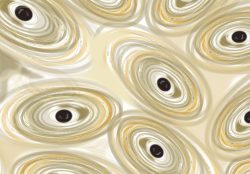 Researchers have now found that specifically programmed materials under very specific conditions can encourage stem cells to transform into bone cells. To achieve this, scientists implemented a so called shape memory polymer in stem cell research.
Researchers have now found that specifically programmed materials under very specific conditions can encourage stem cells to transform into bone cells. To achieve this, scientists implemented a so called shape memory polymer in stem cell research.
Stem cells have the ability to turn into a variety of stem cell types whether cartilage, muscle or bone cells. Like the body they are part of, these cells can sense what happens around them and then react accordingly. For years, researchers have been learning much about how to steer this differentiation process by changing the cells environment.
The knowledge that has been acquired so far is already being used in tissue engineering. This means generating substitute materials that can restore or maintain damaged biological tissues. However, most of the research has been conducted on static scaffolds.
The new research has used a dynamic scaffold. The team took a polymer sheet which acts like an artificial muscle. This sheet has the unusual property that is trained to reversibly morph when it is exposed to repeated changes in temperature.
The team simply molded a grid onto the underside of this sheet and programmed it to stretch as its temperature went from body temperature of 37 degrees C to 10 degrees C and to contract when reheated. The sheet was then seeded with stem cells and carefully observed for the changing shape of the gridded sheet and cells.
With the help of the artificial muscle, the team could use one physical signal which is the temperature change to simultaneously send a second mechanical signal to the stem cells. These synchronized stimuli have the possibility of encourgaing the stem cells to turn themselves into bone cells.
The polymer actuator sheet has a shape memory function. This allows it to act like a transducer which the team can effectively instruct the cells to do what they want them to do. They found that the temperature changes combined with the repeated stretching motion of the film was enough to encourage the stem cells to differentiate themselves into bone cells.
These programmed polymer sheets could be used to treat bones so severely broken that the body can’t repair them by itself. Stem cells harvested from a person’s own bone marrow could be cultured on the polymer sheets and adaptively wrapped around the bone during an operation. The previously trained cells could then directly strengthen the broken bone.
To view the original scientific study click below
Polymeric sheet actuators with programmable bioinstructivity.





